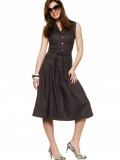Read this ebook for free! No credit card needed, absolutely nothing to pay.
Words: 21427 in 6 pages
This is an ebook sharing website. You can read the uploaded ebooks for free here. No credit cards needed, nothing to pay. If you want to own a digital copy of the ebook, or want to read offline with your favorite ebook-reader, then you can choose to buy and download the ebook.


: How John Norton the Trapper Kept His Christmas by Murray W H H William Henry Harrison - Christmas stories; Friendship Fiction; Gifts Fiction; Hunting stories; Trappers Fiction; Charity Fiction
CHAP. PAGE.
PREFACE.
This little book is written for three classes of readers--for horse-owners who may interest themselves in the subject, for farriers who are open to conviction, and for veterinary students who have to be examined.
The method pursued has been, to first describe the form and action of the foot, next the preparation of the foot for shoeing. Then the form of a shoe is treated of and the details to be observed in making it. The selection of shoes for varieties of feet or for special kinds of work follows, and afterwards the fitting and nailing-on are considered. Other chapters are devoted to "roughing," shoeing defective feet, accidents, the use of leathers and pads.
Throughout an endeavour has been made to be as simple and clear as possible in expression, to lay down correct general principles and to point out the technical details which are essential to good shoeing. On all these points authorities are not agreed, and I trust those who differ from me will pardon any too dogmatic expressions of opinion in these pages.
WILLIAM HUNTING.
THE ART OF HORSE-SHOEING A MANUAL FOR FARRIERS.
Farriery is the art of shoeing horses, and can only be properly learned by a long practical experience in the shoeing-forge. If the foot of the horse were not a living object perhaps the training obtained in the forge would be all that was necessary for efficient workmanship. As, however, the hoof is constantly growing it is constantly changing its form. The duty of a farrier therefore is not merely to fix a shoe upon the hoof but to reduce the hoof to proper proportions before doing so. Now as hoof is only the outer covering of a complex and sensitive foot, damage to the exterior surface may injure the structures within. Injury does frequently result, and not always from carelessness. Perhaps as much injury follows careful work, based upon wrong principles, as slovenly work carried out in perfect ignorance of any principle. The injury to feet resulting from shoeing may not be apparent at once. It may be, and often is, of a slow and gradual nature, and not credited to its true cause until the horse is rendered an incurable cripple.
It seems evident then that to do justice to a horse a farrier should not only possess manipulative skill, but should have a correct idea of the structures and functions of the foot, as well as a thorough knowledge of the form and variations of the hoof.
Few persons appreciate the importance of horse-shoeing, whilst a small number tell us it is unnecessary. Here and there an enthusiast has the courage of his convictions and is able, for a time, to exhibit animals doing work without shoes. In some countries horses are regularly ridden with no addition to their natural hoof, but in such places the surface over which the animals travel is grass land. In all civilised countries where good roads exist shoeing is practised. The gentleman with a fad who occasionally appears in England with unshod horses at work is an unconscious impostor. He sets his little experience against the common sense and universal practice of others. No man of business would pay for shoeing if he could do without it. The "shoeless" experiment has been tried over and over again, but always with the same result--a return to shoeing. In dry weather the hoof becomes hard, and it is wonderful how much wear it will then stand on the hardest of roads. In wet weather the hoof becomes soft, and then the friction on hard roads soon prohibits work without shoes. If work be persisted in, under such circumstances, the hoof rapidly wears away and lameness results. Persons trying to prove a pre-conceived theory meet this difficulty by resting the horse until the horn grows, but business men who keep horses for work in all weathers can afford no such luxury. Shoeing has been called "a necessary evil." The phrase is a misuse of words, for there is no necessary evil about it. Of course it is no more free from accident than other operations, but its evils are fairly described as accidents, whilst its benefits are fully apparent. Without shoes horses at work would be more often lame than with them; without shoes horses could not do half the work they do with them, and so we need not further discuss the necessity of shoeing.
The value of horse-shoeing depends upon the manner in which it is done. Very seldom does the owner of horses appreciate the quality of the work. As a rule the price charged, or the distance from the forge to the stable, regulates the choice of a farrier. Not having any pecuniary interest in the trade, I may say that such matters should not be allowed to decide between one farrier and another. A bad workman may do an injury at one shoeing which will cost the owner of the horse more than would pay ten times over the difference between his charges and the higher prices of a better man.
Many years ago I knew a firm who changed their farrier and system of shoeing for a cheaper plan. The cost for shoeing alone fell very considerably, but the cost of horse-flesh rose in one year more than ?100. The old saw--"that for want of a nail the shoe was lost, for want of a shoe the horse was lost, and for want of a horse the man was lost," has been illustrated times without number. Few persons, however, are aware of the terrible consequences which have more than once attended neglect in the shoeing of horses. Napoleon's retreat from Moscow depended for most of its hardships and horrors upon the simple fact that his horses were not shod properly for travelling on snow and ice. The horses could not keep their feet, and were unable to drag the guns and waggons, which had to be abandoned. During the Franco-Prussian war, Bourbaki's retreat became a confused rout from a similar cause. In civil life no winter passes without injury and death to hundreds of horses from the same neglect. These are instances that anyone can see; but heavy losses due to bad shoeing are constant from other or less evident evils--from the adoption of wrong methods and the practice of erroneous theories.
Free books android app tbrJar TBR JAR Read Free books online gutenberg
More posts by @FreeBooks

: Talvi-iltain tarinoita 1 Kuninkaan hansikas. Linnaisten kartanon viheriä kamari. by Topelius Zacharias J Maa Ilmari Translator - Swedish fiction Translations into Finnish


: From Squire to Squatter: A Tale of the Old Land and the New by Stables Gordon - Australia Juvenile fiction; Adventure stories; Twins Juvenile fiction; Friendship Juvenile fiction; Siblings Juvenile fiction; Voyages and travels Juvenile fiction; Sailors Juv






